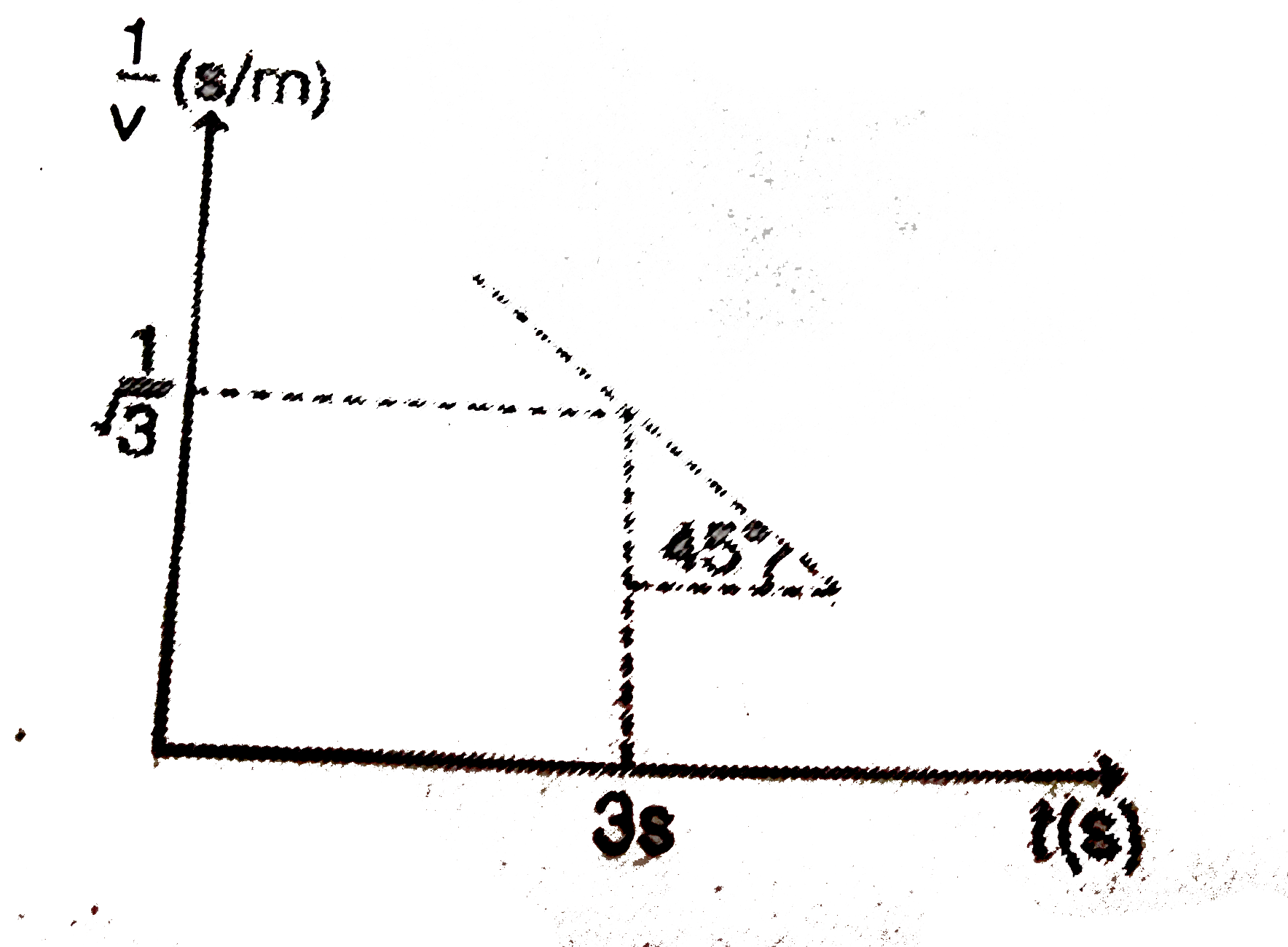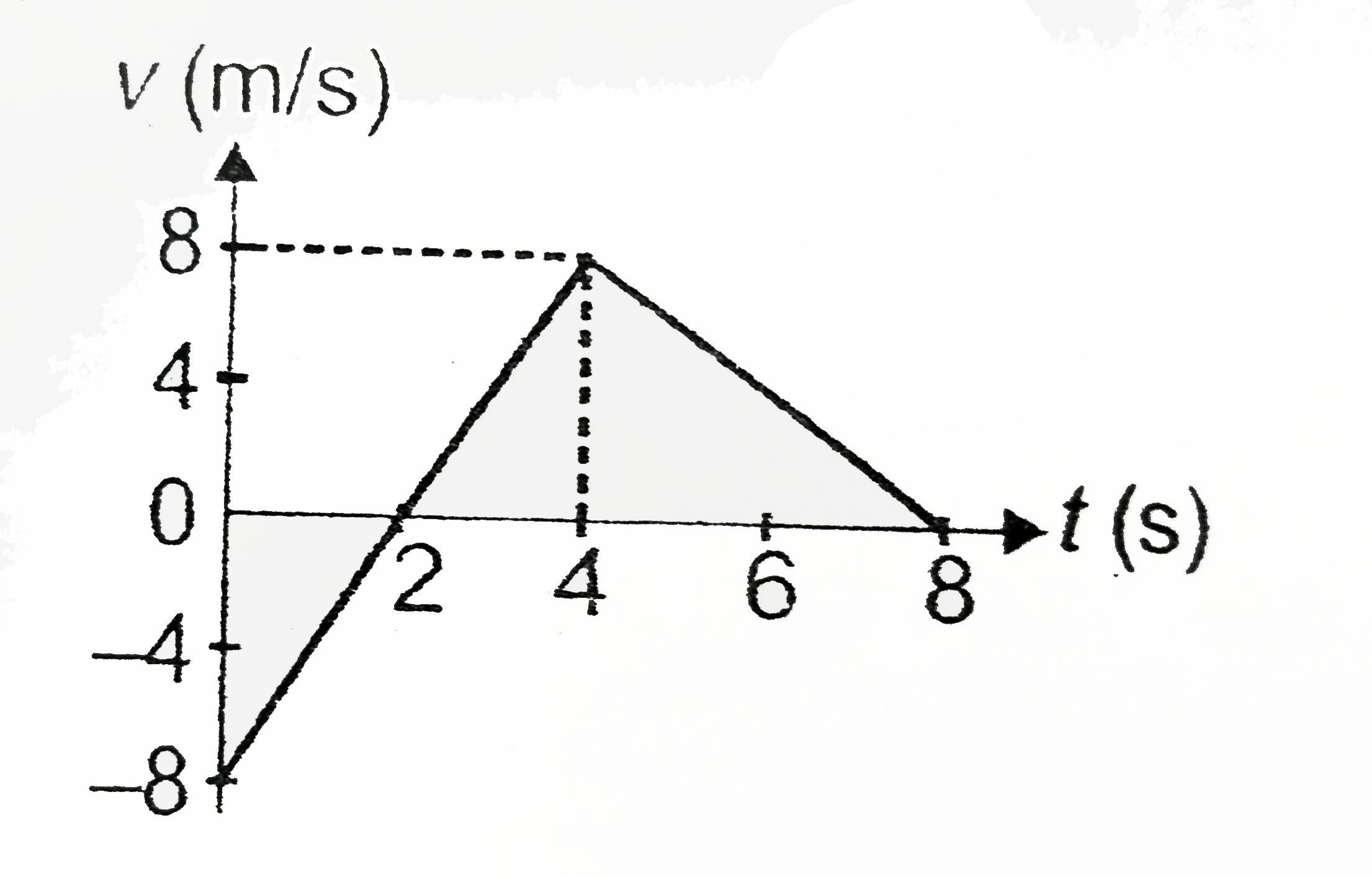The diagram shows the variatioin of 1/v (where v is velocity of the particle) with respect to time. At time t=3s using the details given in the graph, find the instantaneous acceleration (in m/s2)

The correct Answer is:3
Step by step video & image solution for The diagram shows the variatioin of 1//v (where v is velocity of the particle) with respect to time. At time t=3s using the details given in the graph, find the instantaneous acceleration (in m//s^(2)) by Physics experts to help you in doubts & scoring excellent marks in Class 11 exams.
Updated on:21/07/2023Topper's Solved these Questions
Similar Questions
The velocity of a particle is given by v=(2t2−3t+10)ms−1. Find the instantaneous acceleration at t = 5 s.
View SolutionA particle move with velocity v1 for time t1andv2 for time t2 along a straight line. The magntidue of its average acceleration is
View SolutionThe velocity of a particle moving on the x-axis is given by v=x2+x, where x is in m and v in m/s. What is its position (in m) when its acceleration is 30m/s2.
View SolutionFollowing are three equations of motion
S(g)=ut+12at2v(s)=√u2+2asv(t)=u+at
Where ,S,u,t,a,v are respectively the displacement ( dependent variable ), initial ( constant ), time taken ( independent variable ), acceleration ( constant ) and final velocity ( dependent variable ) of the particel after time t.
Find the displacement of the particle when its velocity becomes 10m/s if acceleration is 5m/s2 all through -
View SolutionIf acceleration a(t)=3t2 and initial velocity u=0 m/s , then the velocity of the particle after time t=4 s
View SolutionThe v-t graph for a particle moving along x-axis is shown in the figure, find

(a) Average velocity in the interval 0 to 8 s.
(b) Average speed in the interval 0 to 8 s.
(c) Average acceleration in the interval 0 to 4 s.
(d) Instantaneous acceleration at t = 2.5 s.
View SolutionIn the diagram shown, the displacement of particles is given as a function of time. The particle a is moving under constant velocity of 9m/s. The particle B is moving under variable acceleration. From time t=0s to t=6s. The average velocity of the particle B will be equal to :-

View SolutionThe velocity of a particle is given by v=(4t2−4t+3)m/s where t is time in seconds. Find its acceleration at t=1 second.
View SolutionThe velocity of a particle is given by v=(2t2−4t+3)m/s where t is time in seconds. Find its acceleration at t=2 second.
View SolutionIf velocity of a particle is given by v=(2t+3)m/s. Then average velocity in interval 0≤t≤1 s is :
View Solution
